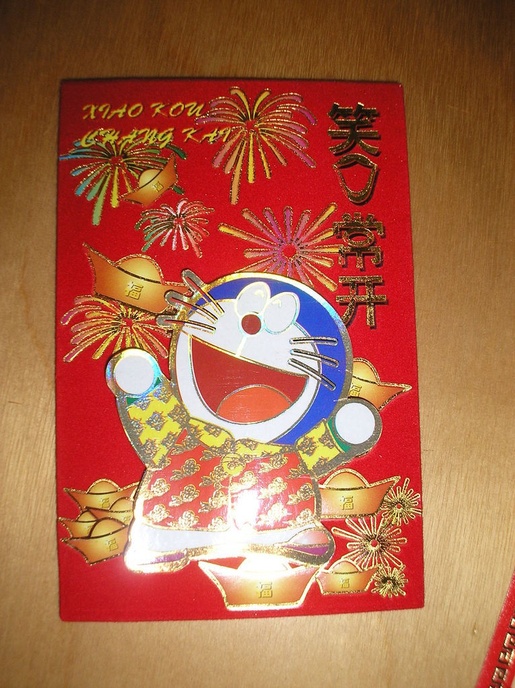
|
||
 Enlarge
Enlarge
|
Licensing | |
Doraemon was created in Japan by Fujiko Fujio in 1970, but throughout the 1990’s to the present it has been released outside of Japan into countries in Europe, Middle East, South America, and other parts of Asia.
Some people may think that it is ironic to see a Japanese anime character on a Chinese red envelope because Chinese New Year is the biggest and most important cultural holiday for Chinese people, yet a representation of Japanese culture is on the Chinese red envelope. However, most Chinese youth and even many adults do not see Doraemon as a Japanese anime character, but just simply a cute cartoon character. As Anne Allison states in Millennial Monsters, “cuteness that may well be Japan’s key to working foreign capital in the twenty-first century,” suggests that people now are especially fascinated by cute characters, like Doraemon, that brings them into a fantasy world or back to their childhood. For children Doraemon may be the portal for them to leave the real world and enter into an imaginative space full of excitement, while for adults Doraemon may be their way to escape the realities of the workplace or responsibilities and return to their stress-free childhood years. This may be one of the reasons why Doraemon does not stand out as much as a cultural icon on a Chinese red envelope.
Doraemon on the Chinese red envelope can also represent Japanese cultural globalization. Although Doraemon is in a Japanese setting, this character is almost “odorless” because through Doraemon, viewers learn very little about Japanese culture. Instead, children from many different cultures can relate to characters in Doraemon because the characters go through problems every child may have gone through regardless of their cultural background, such as problems with school and bullies. However, objects identified as being Japanese is present in the television shows, like the paper sliding doors. Therefore, there is a Japanese presence, but does not include much cultural values that would scare away viewers of different cultures.
This work is licensed under a Public Domain
 mimisql
—
Last modified Mar 30 2011 8:00 p.m.
mimisql
—
Last modified Mar 30 2011 8:00 p.m.


 Journal feed
Journal feed
